The chimney:
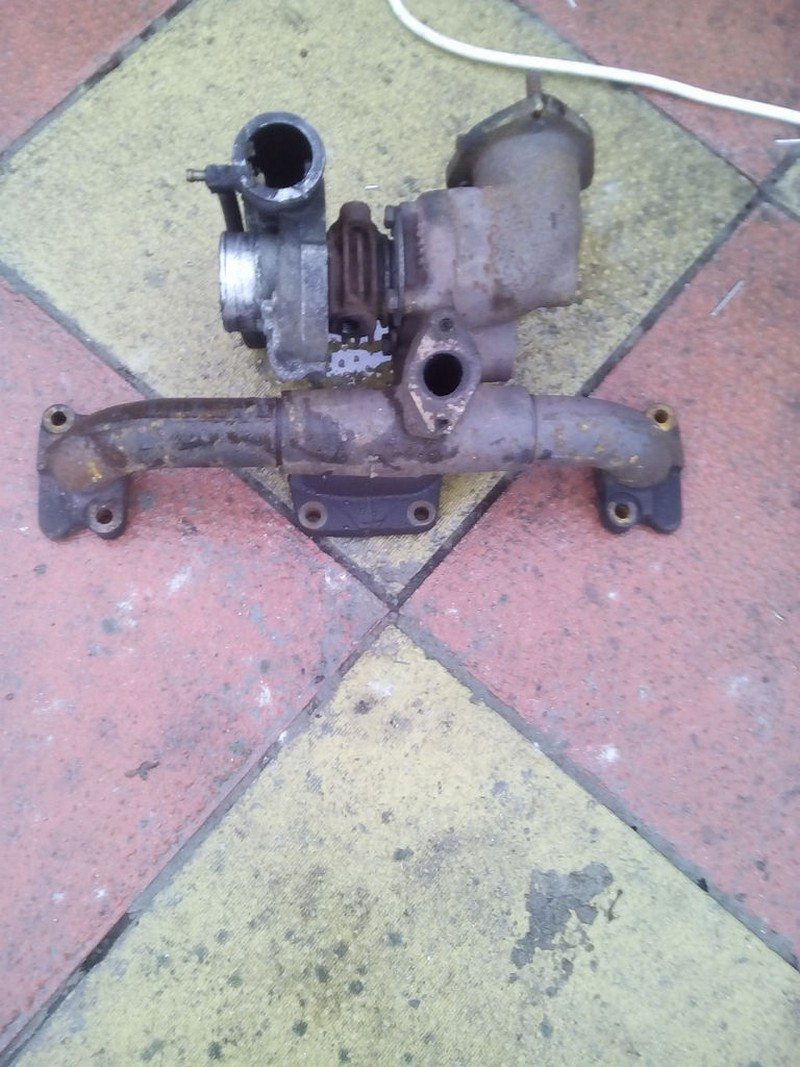
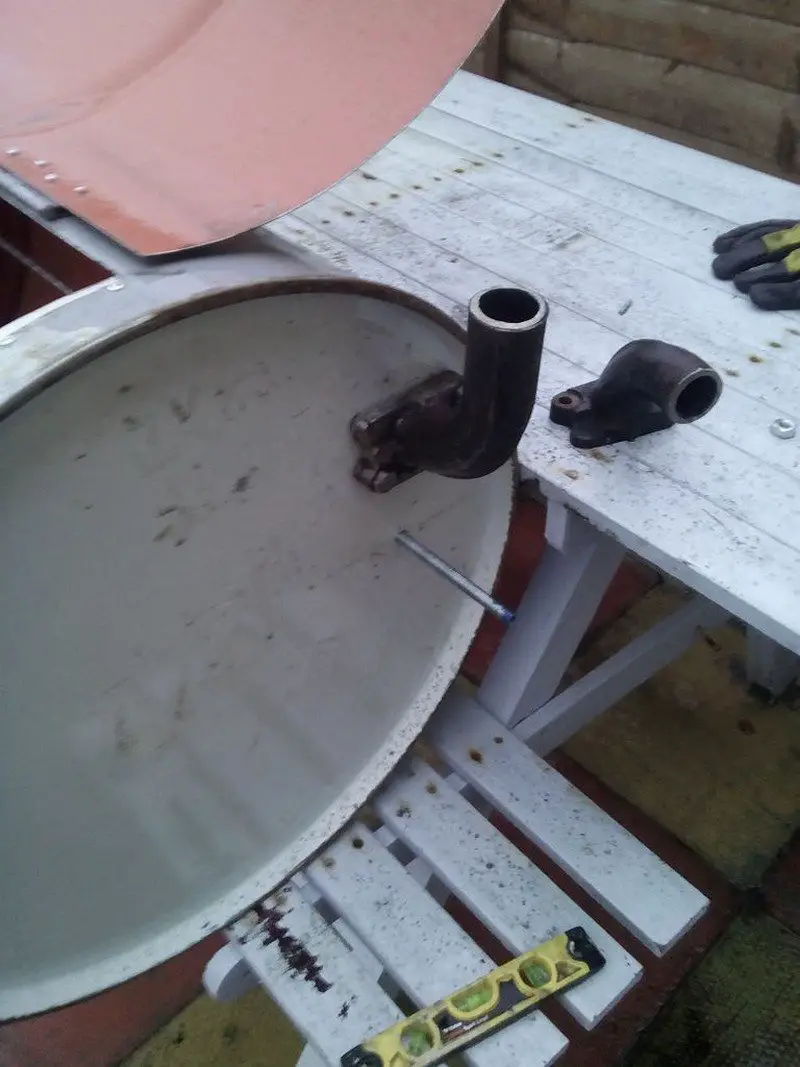
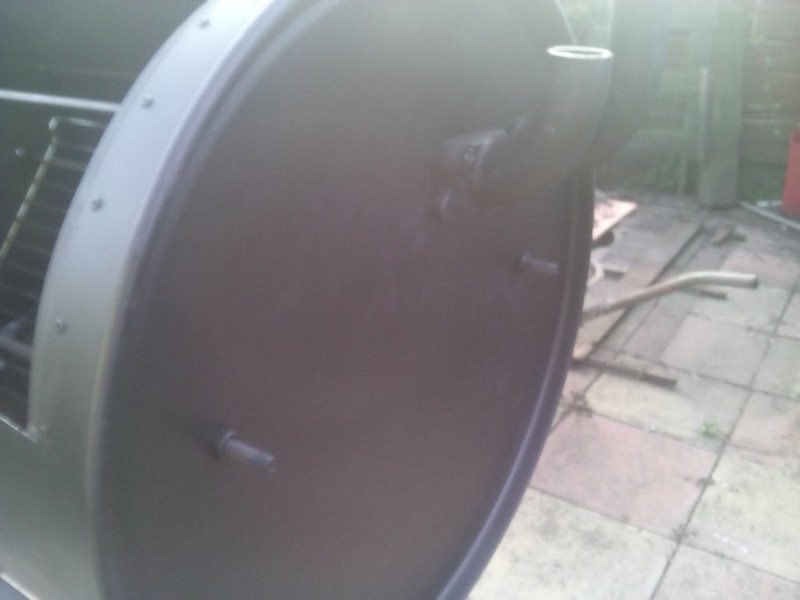
To make the no-weld drum BBQ smoker chimney I used a turbo I had recently changed on my Landrover as it had places to bolt through. But I think a lot of exhaust parts would do the trick, see what your scrap man has.
I just cut the two pipes off, job done.
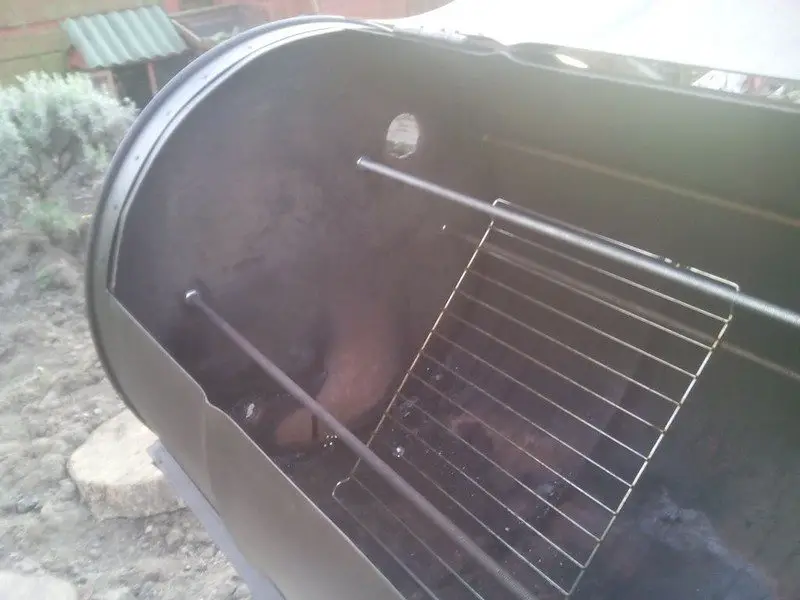
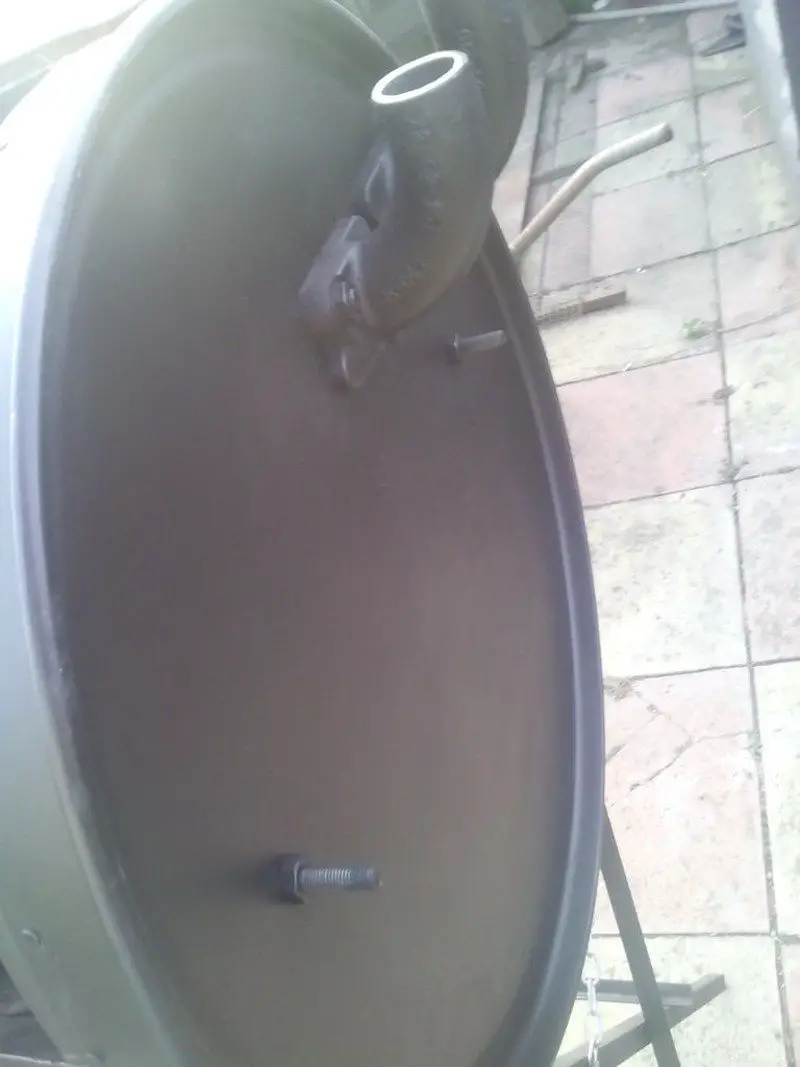
For the no-weld drum BBQ smoker grill racks, I used a threaded bar.
I drilled two-level holes just below the door level on each end, I then fed the threaded bar through putting a nut inside and out on both sides. I tightened the two outside bolts first to put tension into them, then used the inside nuts to lock them, this made the barrel much stronger. I left the bars long on one side to hang tools.
For the top no-weld drum BBQ smoker rack, I used a similar idea but put them through the top bracket on the exhaust pipes as well, with a nut and bolt to secure each chimney through the second hole.
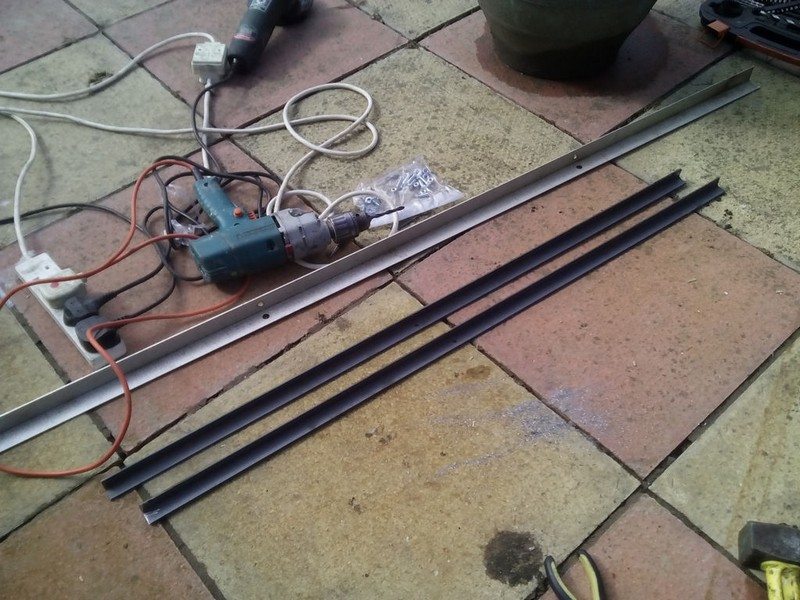
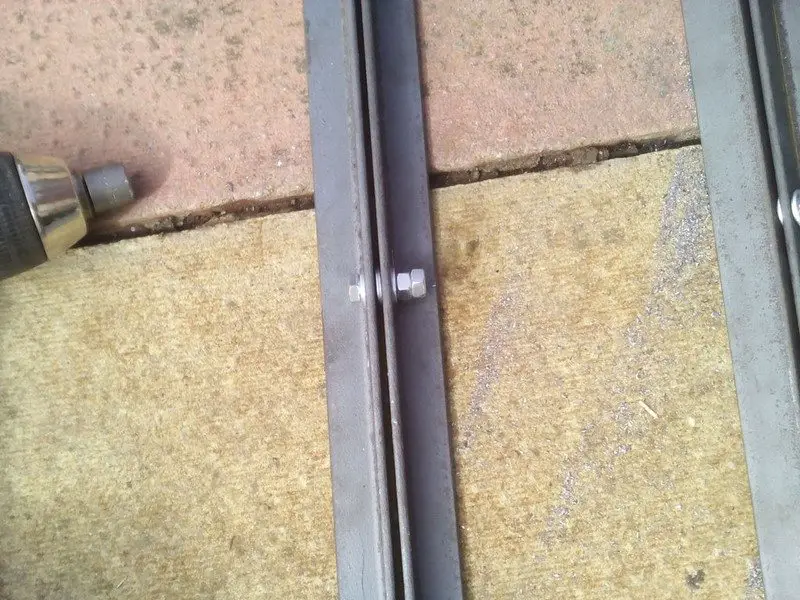
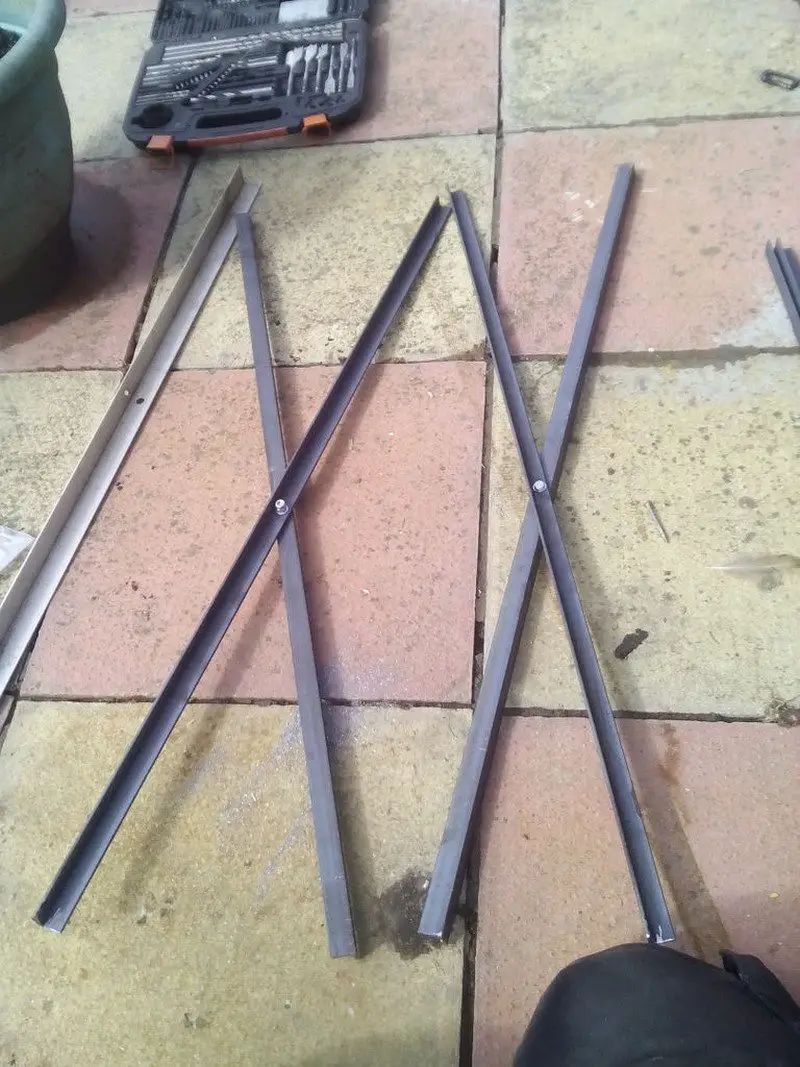
I just made a simple frame. Using 4 legs secured using washers as shown, this means it will fold away. With a cross member at the top to hold the BBQ and halfway up the legs for support. Chains stop it from opening too far and enable adjustment.
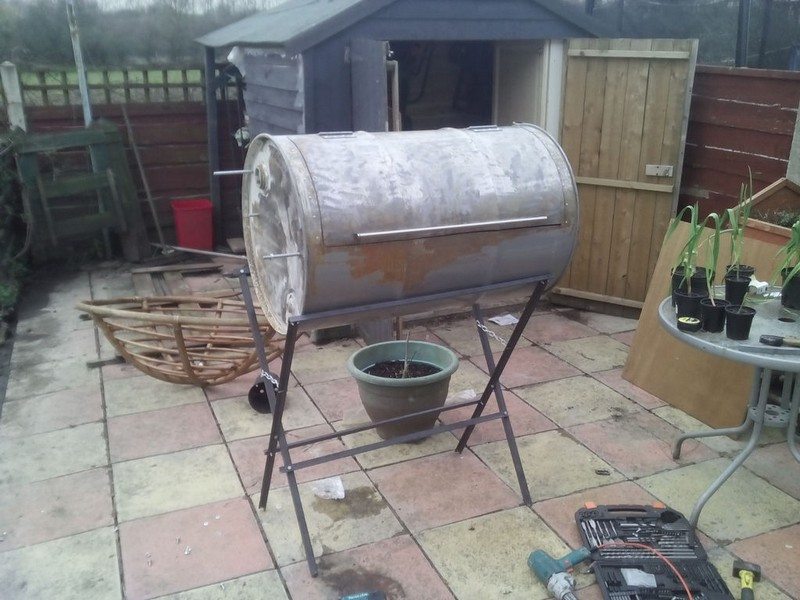
This was just attached to the no-weld drum BBQ smoker using self-tapping bolts.
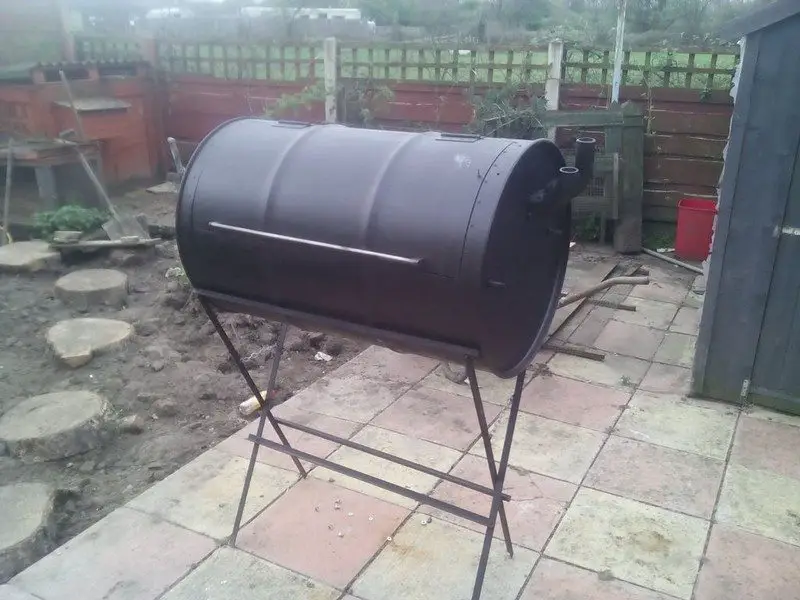
And that’s it — pretty simple!
Is there anything you could suggest to improve this smoker? If you’re after something smaller, ready to use today, and capable of sitting in the kitchen, you might like this inexpensive indoor/outdoor smoker from Nordic Ware.
Thanks to
Selecting the Right Drum
Building a no-weld drum BBQ smoker starts with choosing the right drum, which is crucial for the safety and functionality of your smoker. This section provides detailed advice to help you pick the best drum and ensure your no-weld drum BBQ smoker meets your expectations for quality and performance.
Consider the Material
The material of the drum directly affects the durability and safety of your no-weld drum BBQ smoker. Ideally, you should look for a drum made of thick, durable steel. Steel drums are preferable because they can withstand high temperatures without warping or releasing harmful substances.
Size and Capacity
The size of the drum will determine how much food you can smoke at once. Standard sizes are 55 gallons and 30 gallons, with the 55-gallon drum being the most popular for a no-weld drum BBQ smoker due to its ample space, allowing for multiple racks and greater airflow. Ensure the drum is not too tall or wide for your available space and that it can be easily moved or adjusted.
Source and Safety
Where you source the drum from is as important as its material and size. Many drums are reused from industries that store chemicals or flammable materials, which can be hazardous. Always opt for drums that were used to store food-grade materials or purchase new ones if possible.
If you’re using a recycled drum for your no-weld drum BBQ smoker, it must be thoroughly cleaned and decontaminated to remove any residues or chemicals. A good cleaning involves washing it with soapy water and performing a burn-out to remove any remaining residues.
Check for Integrity
Before finalizing your purchase, inspect the drum for any signs of rust, dents, or weak spots. Any compromise in the drum’s integrity can affect the performance and safety of your no-weld drum BBQ smoker. A well-maintained drum ensures better insulation and temperature control, which are crucial for effective smoking.
Selecting the right drum is the first step in creating a successful no-weld drum BBQ smoker. By focusing on these key aspects, you ensure a solid foundation for your DIY project.
Preparation and Safety Tips
When creating a no-weld drum BBQ smoker, preparation and safety are paramount. The process involves modifying a drum, which can be hazardous without the right precautions. This section provides essential safety tips and preparation steps to ensure your project is not only successful but also safe.
Understanding the Risks
Before beginning the construction of your no-weld drum BBQ smoker, it’s crucial to understand the risks involved. Cutting and drilling metal can produce sharp edges and metal filings, which are hazardous. Furthermore, if the drum previously contained chemicals or flammable substances, there is a risk of residual fumes igniting. Being aware of these risks will help you take the necessary precautions.
Choosing a Safe Workspace
Select a workspace that is well-ventilated and free from flammable materials. An outdoor space is ideal, especially when you need to use tools like angle grinders or when performing a burn-out of the drum. Ensure the ground is stable and flat to prevent any accidents with unstable equipment.
Protective Gear
Wearing the right protective gear is essential when working on your no-weld drum BBQ smoker. At a minimum, use:
- Safety goggles to protect your eyes from metal filings and sparks.
- Heavy-duty gloves to protect your hands from sharp edges and heat.
- Ear protection, especially if using loud power tools.
- A respirator or mask if sanding paint or if there’s a risk of inhaling fumes during a burn-out.
Proper Tool Handling
Familiarize yourself with all tools before starting. Read the manuals for power tools like drills and angle grinders to understand their operation and safety features. Keep all tools in good working order and regularly check for any damage or wear before use. This ensures they are safe to use and effective, reducing the risk of accidents while building your no-weld drum BBQ smoker.
Drum Cleaning and Decontamination
If the drum used for your no-weld drum BBQ smoker previously held chemicals or oils, thorough cleaning is crucial:
- Wash the drum with a degreaser and soapy water to remove any oil or chemical residues.
- Perform a burn-out by filling the drum with wood or other safe burning materials and allowing it to burn for several hours. This process helps to eliminate any remaining residues and paint.
- Rinse the drum thoroughly after the burn-out and let it dry completely before proceeding with any modifications.
Safe Cutting Techniques
When cutting or drilling into the drum, always:
- Secure the drum so it doesn’t move.
- Use sharp, appropriate tools to minimize effort and prevent slippage.
- Start with small pilot holes before making larger cuts.
- File down any sharp edges after cutting to prevent injuries.
Fire Safety
Keep a fire extinguisher nearby when performing tasks that might generate sparks or involve burning. This is especially important during the burn-out process of your no-weld drum BBQ smoker. Also, keep a first aid kit accessible in case of minor injuries.
Monitoring and Ventilation
Always ensure adequate ventilation in your working area, particularly if sanding or painting. Fumes from paints and cleaners can be harmful if inhaled in enclosed spaces. It’s advisable to wear a respirator during these tasks.
By adhering to these preparation and safety tips, you can safely and effectively build your no-weld drum BBQ smoker. Taking the time to prepare properly and follow safety protocols can make the difference between a successful project and a hazardous situation. Always prioritize safety to enjoy the process of building and later using your no-weld drum BBQ smoker.
Conclusion
Building a no-weld drum BBQ smoker offers an affordable and straightforward way to enjoy homemade smoked meats without complex equipment. Proper selection and preparation of the drum ensure safety and functionality throughout the construction and usage phases. Once assembled, this smoker becomes a versatile addition to any outdoor cooking setup, promising delicious results and the satisfaction of DIY craftsmanship.






